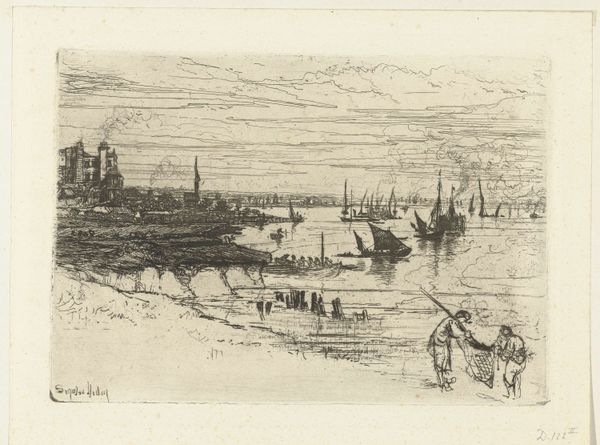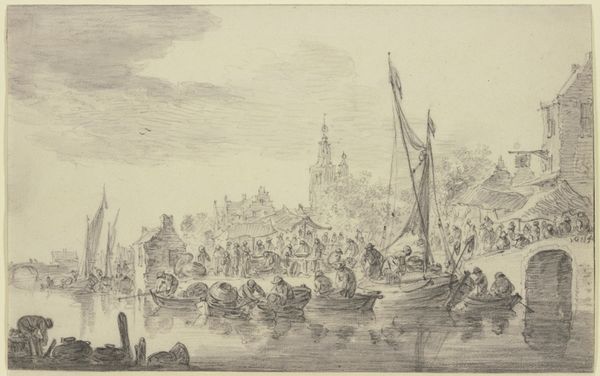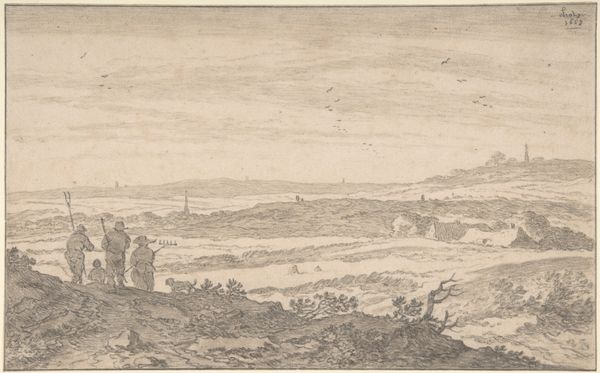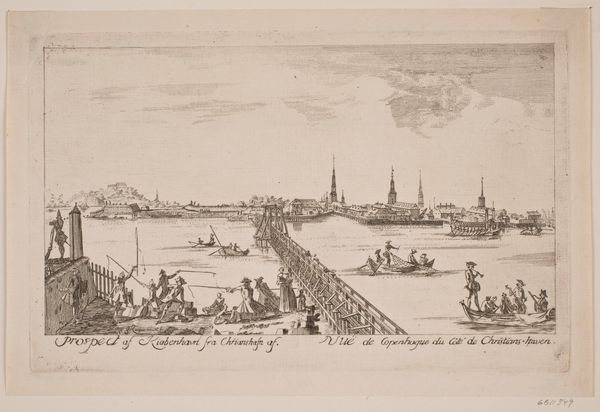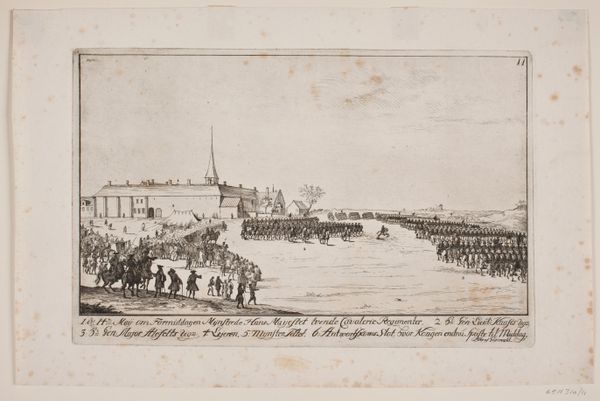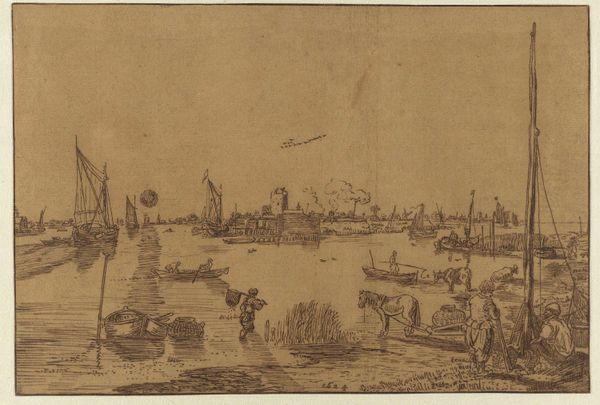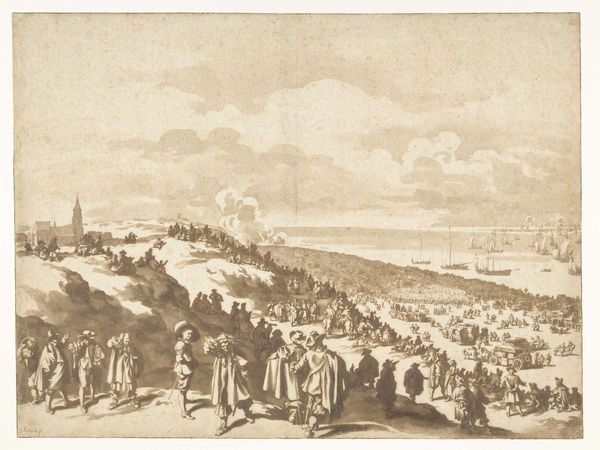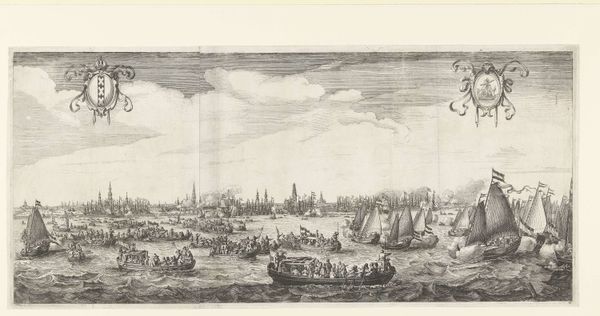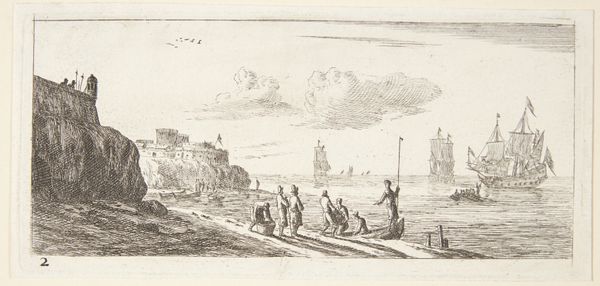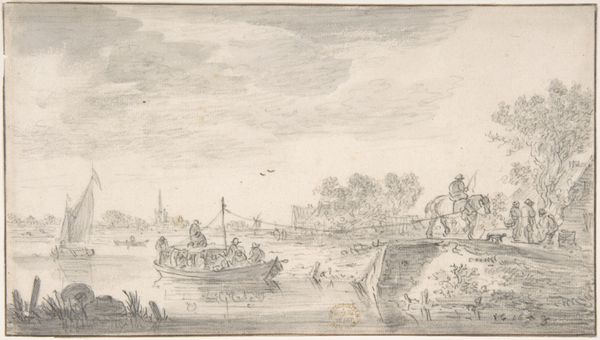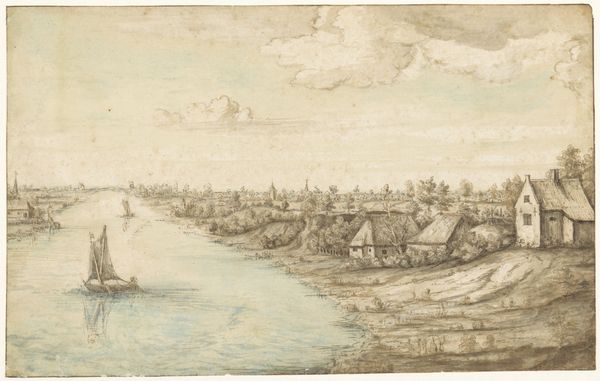
print, etching
#
baroque
# print
#
etching
#
landscape
#
figuration
#
cityscape
#
genre-painting
Dimensions: sheet: 15 x 24.3 cm (5 7/8 x 9 9/16 in.) (cut to platemark)
Copyright: National Gallery of Art: CC0 1.0
Curator: This delicate etching by Conrad Meyer, dating back to 1649, is titled "Winter." What do you make of it at first glance? Editor: It feels both serene and bustling! The icy expanse dominates, but is animated by all these tiny figures—people at work and play. The line work, I have to say, has a real handcrafted sensibility, a sense of individual labour invested in its creation. Curator: Precisely! Consider the sociopolitical context: in 17th-century Europe, representations of daily life often carried moral and even political weight. How does the activity depicted intersect with societal norms or class structures of the time, would you say? Editor: It presents a kind of collective resilience, doesn’t it? Winter imposes hardship, yet the community is actively finding ways to subsist and take pleasure. I'm interested in the way etching allowed for relatively easy reproduction and circulation, expanding access to such imagery. It’s a very democratic medium in some sense. Curator: I'd say so. Look at how Meyer positions the city on the horizon, not as a detached backdrop, but rather integral to the overall tableau of the print. It underscores how interconnected the rhythms of the city are to the rural life that plays out upon this ice-covered ground. Genre scenes such as these gave voice to the middling and lower classes of society that often were not portrayed, except as allegories or caricatures. Editor: You’re absolutely right. We can't ignore that the frozen landscape becomes a shared terrain where hierarchies become somewhat less defined through mutual need and shared pastimes. Also, the textural qualities achieved via etching replicate a sense of the harshness of the season and what people did to face it, no? Curator: Yes. These individuals appear as participants rather than isolated actors. They share common conditions, like the effects of the cold. I wonder what role it played in unifying those very classes, since the weather never discriminates. Editor: A key observation! The material act of creation, using etching to depict these scenes of shared labor and leisure during winter, provides valuable insight into the era’s means of artistic production. I am truly drawn to that the etching captures this period's daily grind, especially since such material insights often elude mainstream art criticism. Curator: For me, this winter scene by Meyer is a perfect illustration of how we may study artwork. From materials to the narratives that intersect in each mark on this print, we can grasp the complex web of identities and lives interwoven in this period in time. Editor: Yes, it prompts to us look past mere depiction to observe production itself, unveiling significant and very important details in art history.
Comments
No comments
Be the first to comment and join the conversation on the ultimate creative platform.

